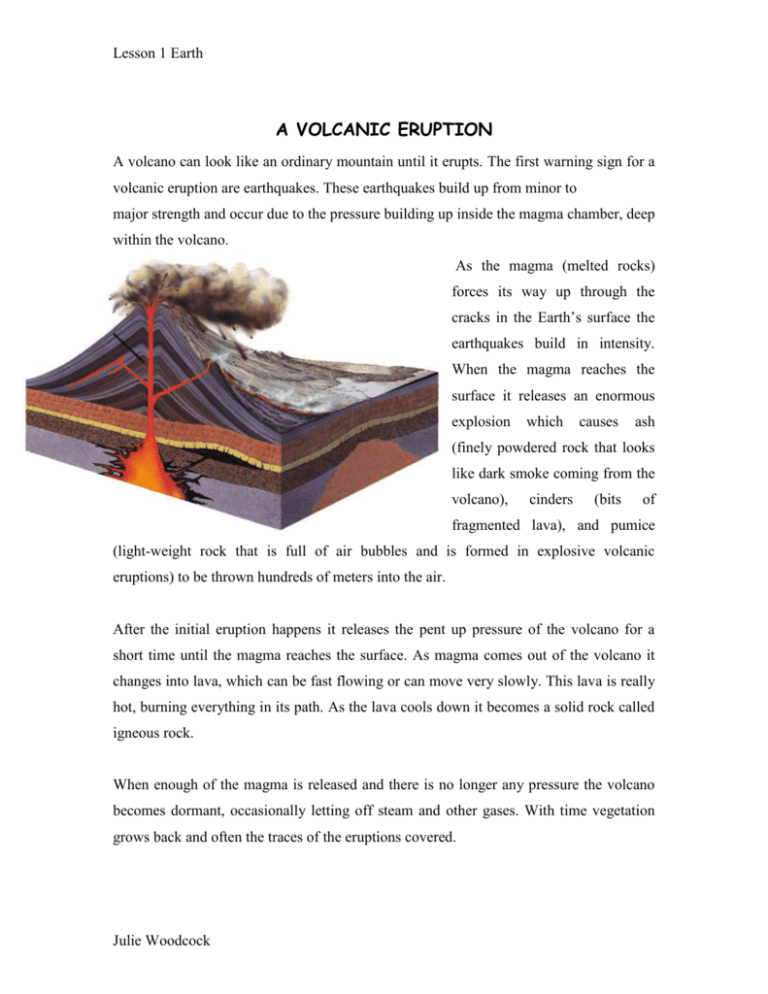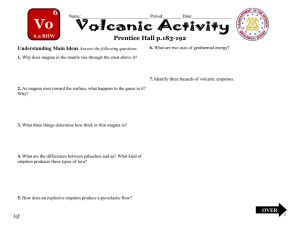Volcanic Activity Student Information Sheet
advertisement

Lesson 1 Earth A VOLCANIC ERUPTION A volcano can look like an ordinary mountain until it erupts. The first warning sign for a volcanic eruption are earthquakes. These earthquakes build up from minor to major strength and occur due to the pressure building up inside the magma chamber, deep within the volcano. As the magma (melted rocks) forces its way up through the cracks in the Earth’s surface the earthquakes build in intensity. When the magma reaches the surface it releases an enormous explosion which causes ash (finely powdered rock that looks like dark smoke coming from the volcano), cinders (bits of fragmented lava), and pumice (light-weight rock that is full of air bubbles and is formed in explosive volcanic eruptions) to be thrown hundreds of meters into the air. After the initial eruption happens it releases the pent up pressure of the volcano for a short time until the magma reaches the surface. As magma comes out of the volcano it changes into lava, which can be fast flowing or can move very slowly. This lava is really hot, burning everything in its path. As the lava cools down it becomes a solid rock called igneous rock. When enough of the magma is released and there is no longer any pressure the volcano becomes dormant, occasionally letting off steam and other gases. With time vegetation grows back and often the traces of the eruptions covered. Julie Woodcock











